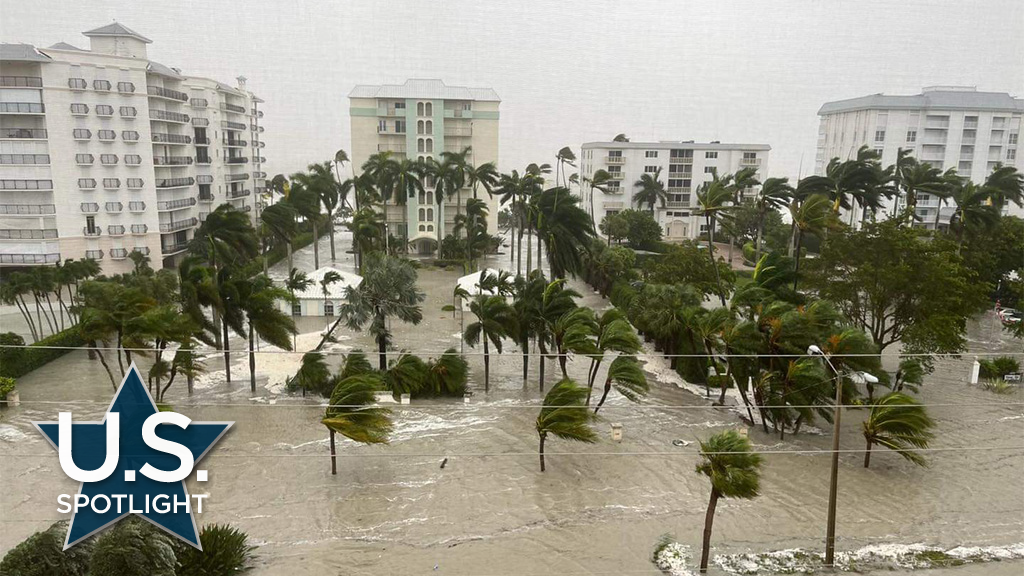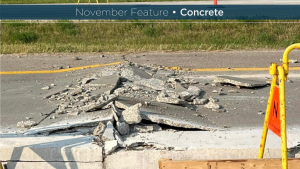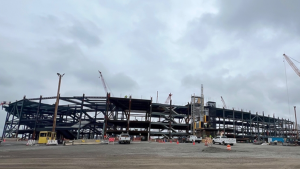The accelerating rate of global sea level rise and warming oceans is causing more deadly and destructive hurricanes and storm surges that are wreaking havoc in southern portions of the United States.
Hurricane Ian, for example, a category four hurricane that struck southwest Florida last September, caused 157 deaths and more than $50 billion in damage.
In the face of such climate-fuelled disasters, strengthening coastal buildings and seawalls and understanding how wind, storm surges and waves affect infrastructure and structures is now paramount.
The National Institute of Standards and Technology (NIST), a division of the U.S. Department of Commerce, is funding two research projects by University of Miami engineering and ocean sciences faculty members that will delve into what action needs to be taken to strengthen the structures.
The two grants amount to nearly $800,000 over three years and are part of a larger investment of nearly $8 billion to support 20 new research projects that will expand knowledge of community and infrastructure resilience to natural hazards.
Prannoy Suraneni, an assistant professor in the department of civil and architectural engineering at the university, is leading one of the projects. He will be investigating how innovative building materials like ultra-high-performance glass-fiber-reinforced polymers can help make concrete seawalls better equipped to withstand erosion and cracking from seawater, waves and storm surge.
“Ultimately, our hope for these projects is to change the way engineers think about designing structures, not just for strength but also for resilience,” he says. “We also hope that this research will change the way people choose materials in the building industry.”
Suraneni is an expert in cement chemistry and will be testing the new materials as an alternative to traditional steel-reinforced concrete.
Using glass-fiber-polymer-reinforced concrete will avoid corrosion that often causes concrete structures in saltwater environments to degrade. Suraneni and his team will also be evaluating the ability of the materials to create more sustainable seawalls, which could prove extremely useful in coastal communities.
The team includes Antonio Nanni, professor and chair of the department of civil and architectural engineering, Esber Andiroglu, engineering associate professor of practice, Landolf Rhode-Barbarigos, engineering assistant professor, and Brian Haus, ocean sciences professor at the Rosenstiel School of Marine and Atmospheric Science.
Rhode-Barbarigos and Haus are also leading the second project which will investigate and quantify the actions of hurricane wind, storm surge and wave loads on structures in coastal locations like Miami. Both professors have been engaged in coastal resilience research for the past four years with the university’s Laboratory for Integrative Knowledge, a program that offers seed funding to interdisciplinary faculty teams to investigate complex societal problems, such as climate change.
The idea of both projects is to find ways to make buildings along the coast less vulnerable with the possibility of more intense hurricanes and tropical storms on the horizon.
Under the present system, engineers design structures using separate load models for wind, waves and storm surge that they later combine. However, during a storm, wind, waves and storm surge are always linked.
As part of the project, researchers want to create new load models for structural engineers that account for combined action of wind, storm surge and waves.
“We want to develop an understanding of how wind, storm surge and waves interact at high wind speeds, to assess their combined effect on the structures,” explains Rhode-Barbarigos.
Both project teams will be doing physical testing in the Alfred C. Glassell Jr. SUSTAIN laboratory at the Rosenstiel School, along with field work and testing in other university labs. The SUSTAIN lab has a 38,000-gallon tank with a controllable air-water test environment that will allow Suraneni and Rhode-Barbarigos to simulate hurricane conditions to test the performance of new materials and measure the forces they would be up against in a strong tropical storm or hurricane event.
Haus, who is co-investigator on both projects, says they will be important for a lot of applications in the field because the information can be used to revamp building codes.
“Or in the case of the materials, they could be used to improve coastal construction,” he notes.
Grants for the two projects were awarded after the creation of the university’s Climate Resilience Academy which was launched this past spring to incite more collaboration between faculty, industry and government to find innovative remedies to issues related to the climate crisis, sustainability and resilience.











Recent Comments
comments for this post are closed